It was a viral video clip of raucous revellers in Oliver St John Gogarty's, punching the air as they joined a band banging out the chorus of Neil Diamond's Sweet Caroline, that led to a voluntary closure of pubs in Temple Bar on the weekend before St Patrick's Day. After the Covid-19 lockdown, only the local pharmacy remained open, and Dublin's drinking quarter had become so eerily silent that Luigi, our long-time neighbour from Naples, found it "so quiet now that I can't sleep".
A different kind of Dublin must surely be in prospect as a result of this pandemic. Those of us who live in the heart of the city can barely believe how uncluttered the streets have become as a result of the dramatic drop in traffic levels. Things that were talked about for years, such as cycleways on the Liffey quays and a contra-flow one on Nassau Street, are suddenly happening, while plans are being hatched to reallocate more road space for once-harried pedestrians.
The footfall on city centre streets has plummeted to negligible levels due to the lockdown, giving the lie to idealistic notions that we had succeeded in creating a sustainable “living city”. The residential population of the south-central area had been substantially reduced by illegal conversions of houses and apartments to tourist short-lets via Airbnb, the Key Collection, Booking.com and other agencies. In Temple Bar, up to 40 per cent of its housing stock had been lost in this way.
Over Easter, when everyone was supposed to be isolating or “cocooning” at home, we snooped around the neighbourhood after dark, taking photographs of all of the residential buildings to document occupancy levels. What we found was shocking: apartments all over the place with no lights on, including a number of buildings that were entirely vacant, with no sign of life at all. The inescapable conclusion was that these had been turned over to tourists in recent years.
Footfall means everything in retail terms, of course. A street needs to be bustling with potential shoppers, whether they’re locals or tourists, for shops to survive. But with more and more people shopping online year after year, the long-term future of bricks-and-mortar retail is increasingly in doubt – compounded by the Covid-19 emergency, which has added around $30 billion to the personal wealth of Jeff Bezos, the already super-rich founder and chief executive of Amazon.
“This pandemic will drive people further online,” according to Bobby Kerr, who founded the Insomnia Coffee Company and led its expansion for 20 years. He believes that the current model for rents and commercial rates will have to be “torn up” and replaced by a fairer system based on percentages of a retail premises’ annual turnover. “Retail will survive but it will be much more non-location specific, with a new emphasis on ‘click-and-collect’ and delivery.”
Redefining urban centres
Kerr, a former “dragon” on Dragons’ Den and now a broadcaster on Newstalk radio, believes the pandemic will have a lasting negative impact.
“With no regular flow of tourists for the foreseeable future and many people working from home, there will be a permanent spending shift from city and town centres to the suburbs,” he warns. “This will create some opportunity, but it underlines the urgent need to redefine the role of our main streets and urban centres.”
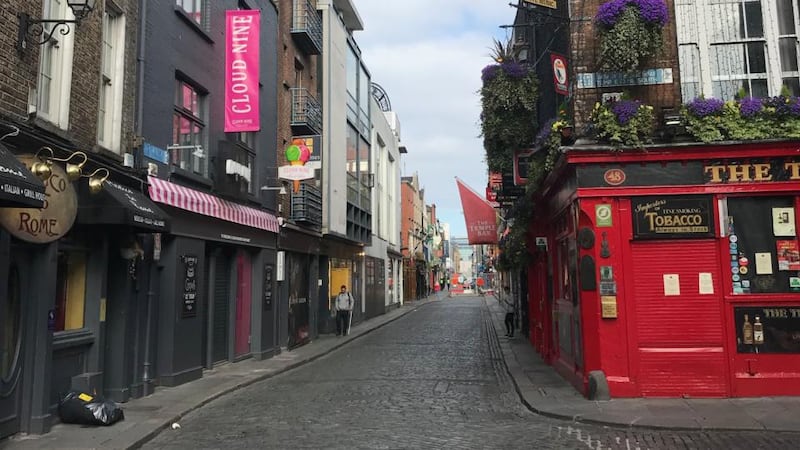
His solution would be to "let people live" in retail buildings that are no longer required – which is easier said than done. Almost nobody lives on Grafton Street, apart from the provost of Trinity College, Dr Patrick Prendergast, in a Palladian urban palace at number 1, and the residents of five apartments above the Lush soap shop across the street. Most of the upper floors of shops are used for offices or storage and no longer have separate access from ground level.
One of the bitter ironies about the recently announced closure of Bewley’s, Dublin’s “legendary, lofty clattery café”*, is that it came just three years after the Grafton Street premises reopened following a comprehensive €12 million refurbishment by deBlacam and Meagher Architects. Another is that its 35-year lease is up for renewal in 2022, when the current annual rent of €1.5 million would almost certainly be reduced to a much more manageable level.
Most of the buildings on Grafton Street are owned by pension funds, insurance companies or private equity investors, so high rents are the norm. Bewley’s, which has been operated for many years by the Campbell Catering group, claimed that the rent it was paying to RGRE Grafton Ltd, headed by property developer Johnny Ronan, amounted to a third of its turnover. Equally, however, the “food offer” was poor enough, out of time and even out of place.
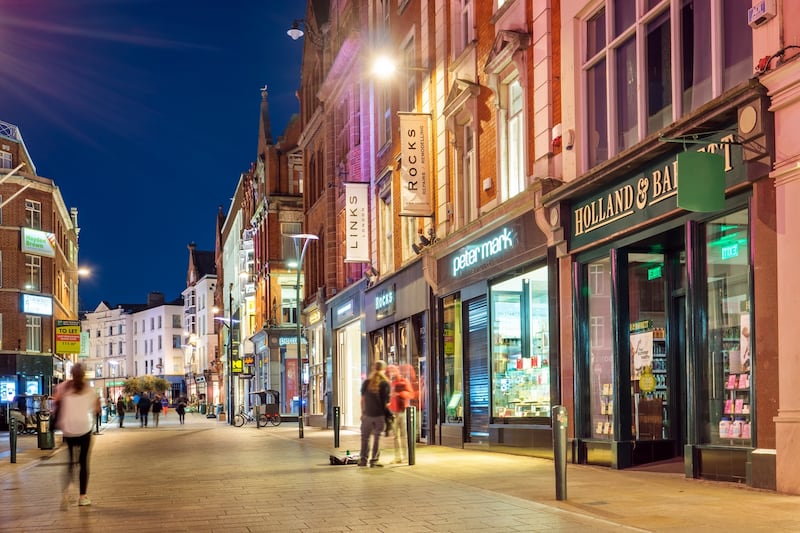
John Corcoran, owner of Korky’s shoe shops and a leading campaigner against upward-only rent reviews, pointed out that this rule no longer applies to new commercial leases. And with the Bewley’s lease due to expire in two years’ time, he firmly believes that the annual rent for a new 35-year lease could be reduced by more than half. “I expect it would go down to €600,000 or €700,000 in an arbitrated rent review,” he says.
More Starbucks?
The highly-distinctive building, with its elaborate orientalist facade, is listed for preservation as “Bewley’s Café” on Dublin City Council’s Record of Protected Structures, so it cannot be altered or demolished without planning permission. Neither would approval likely be granted for a change of use to a multiple fashion store of the type that’s so pervasive on Grafton Street. The chances are that it could become yet another Starbucks.
That's what happened to Bewley's on Westmoreland Street, once the favourite canteen for journalists in The Irish Times, where Maeve Binchy loved to eavesdrop on other people's conversations on her way to becoming a best-selling novelist. And thanks to collaborators Colm and Ciarán Butler, Ireland now has more Starbucks coffee shops per capita than any other country in Europe, with more thn 80 outlets, the majority of them in Dublin.
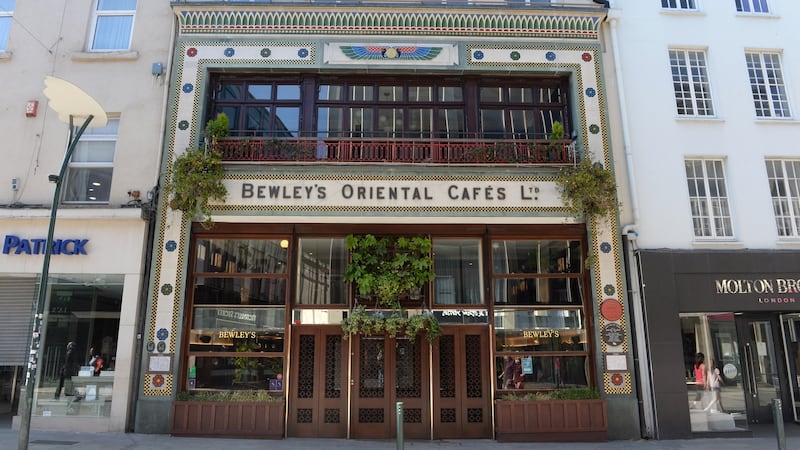
Thus, a quintessential Dublin institution, which first opened its doors in 1927 with a big brass coffee roaster in the window, would become just another cog in a worldwide chain of 31,000 outlets for Starbucks, headquartered in Seattle. This homogenisation of Bewley's Café would merely serve to consolidate what has happened to Grafton Street over the past 40 years, as a diverse range of indigenous businesses were supplanted by multinational brands.
Notable losses include Cavendish Furniture, the China Showrooms, Combridge's Fine Art shop, Fanin's Surgical Instruments, FX Kelly's menswear, Hayes Conyngham & Robinson chemists, the Eblana Bookshop, West's jewellers, Richard Alan, Robert Roberts Café and the Grafton Cinema. In the mid-1990s, Switzer's department store became a new, Dallas-style Brown Thomas, while its elegant old premises was taken over – and sanitised – by Marks & Spencer.
Nespresso consumed the Creation Arcade while the Grafton Arcade was replaced by Tommy Hilfiger. As for the rest, there’s Boots, Boss, Body Shop, Boodles, Burger King, Carl Scarpa, Champion Sports, Chanel, Diesel, Disney, Hermès, Foot Locker, Levi’s, McDonalds, Massimo Dutti, Moulton Brown, North Face, Rituals, River Island, Three, Swarovski, Swatch, Victoria’s Secret, Vodafone and Louis Vuitton. It’s just like anywhere else, really.
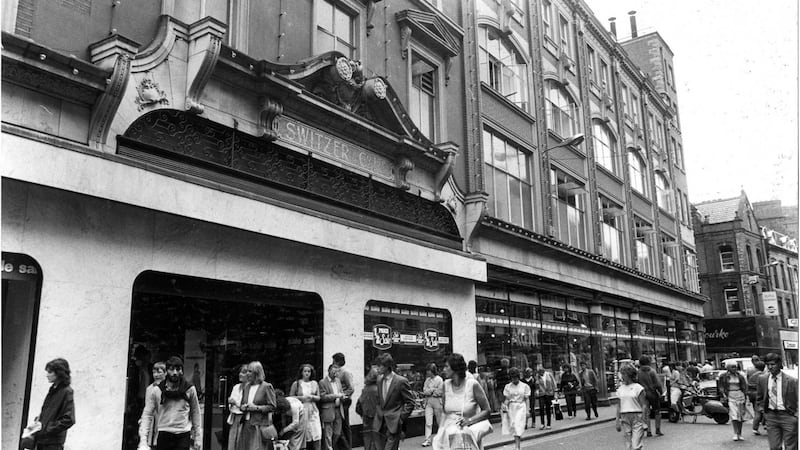
The greatest survivor from the good old days of Grafton Street is Weir and Sons’ jewellery, pens, watches and leather goods emporium, which last year celebrated its 150th anniversary. With beautiful curved windows, bevelled and etched glass on carved mahogany doors, and original Victorian display cases, it is literally a relic of another era – but one that’s relatively secure because the building is owner-occupied, rather than leased.
In 2008, when the property market crashed, Grafton Street was ranked as the world’s fifth-most expensive shopping street, with annual rents for ground-floor retail space – “Zone A” in real estate agents’ parlance – racking up at €5,621 per square metre. And although rental levels fell during the recession, they’ve gone up again since, with high-end retailer The White Company having to pay up to €7,000 per square metre for its new premises in 2019.
Hotel development
Much of the development that’s taken place in Dublin over the past five years or so has involved building hotels, based on what now look like wildly optimistic estimates for overseas tourist numbers, such as the latest plan for an eight-storey Premier Inn on a narrow site on Usher’s Quay. Reading the documentation compiled in support of this scheme – before the pandemic took hold – is like entering a parallel universe, where everything is projected on an upward curve.
Meanwhile, on the Northside, Henry Street has been left without one of its anchors after Debenhams announced the closure of its large department store. This was brilliantly remodelled in 2003 by Newenham Mulligan Architects for Roches Stores before the British chain took it over, with angular glazing over its corner entrance, a grand central atrium and a high-level cafe projecting over the street. Now, it looks like a white elephant in the changing retail landscape.
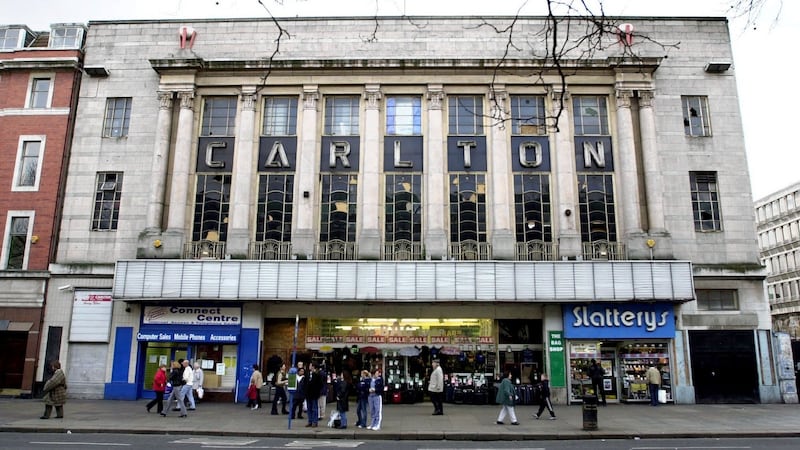
Arnotts, Dublin's largest department store, once had hugely ambitious plans for what was branded a "Northern Quarter" along Abbey Street and Princes Street, incorporating the former Independent Newspapers building, and arranged around a new square, with bars, restaurants, apartments and a hotel. But the 2008 crash put an end to this scheme, and now Arnotts is part of a business alliance opposing plans for more pedestrianisation and cycleways.
The shock closure of Clerys in 2015 robbed Lower O’Connell Street of its principal retail anchor. Work is now under way behind its 1920s neo-classical facade on the “Clerys Quarter” – largely funded by American investors who backed Press-Up Entertainment’s Paddy McKillen jnr and Matt Ryan in buying the property for €63 million in 2018. Whether the mix of offices, retail and a 176-bedroom four-star hotel with a rooftop restaurant is the right one remains to be seen.
There must be serious doubt about whether Hammerson plc, the British property group that owns Dundrum Town Centre, will now proceed with its plans for a major shopping centre extending from Moore Street to Upper O'Connell Street. "I don't see it happening," John Corcoran says. "Capital values for retail have collapsed, and the future looks bleak other than for services such as hairdressers, nail bars, restaurants and entertainment venues."
There may be a silver lining here. As it happens, the entire volume of the former Carlton Cinema still survives behind its art deco facade, and it could be restored as a venue to compete with the Bord Gáis Energy Theatre in the Grand Canal Docks as well as rejuvenating Upper O’Connell Street. One could even imagine the Carlton Grill on the first floor being reinstated, in an evocation of what Dublin’s main street was like during its heyday during the 1950s.
Is this a fantasy? Perhaps. But we surely need to dream about a different world: cracking down on the Airbnb plague to restore city living; promoting more affordable housing rather than office blocks we may no longer need; shopping locally instead of enriching Amazon; making space available for artists and culture at least on secondary streets; facilitating walking and cycling rather than endless traffic; and cherishing Dublin’s human scale by resisting random eruptions of high-rise buildings.
* The Legendary Lofty Clattery Cafe: Bewley’s of Ireland, by Tony Farmar, published in 1988



















